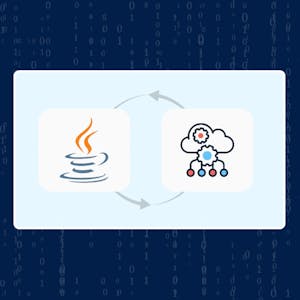GO Programming for Everyone: Part 2
About this Course
This course provides you with new opportunities to use the Go programming language. Building on the foundational knowledge introduced in the first course \"GO Programming for Everyone: Part 1\", this course delves deeper into the Go programming language, offering a comprehensive understanding of its more advanced features. GO is an open-source programming language developed and supported by Google. It is easy to learn and use. In the new world we live in, coding is a universally valuable skill, whether you\'re a scientist, artist, or a humanist. Algorithms are everywhere, and we all have to understand how they work. Designed for learners who have completed the first course or possess basic Go programming knowledge, this course will expand your skills and enhance your ability to develop efficient, scalable applications. The estimated time commitment for this course is five hours a week for five weeks. This is primarily aimed at first- and second-year undergraduates interested in engineering or science, along with high school students and professionals with an interest in programming.Created by: University of California, Santa Cruz

Related Online Courses
\"Explore the essentials of project management for success in both personal and professional endeavors. This course offers a comprehensive understanding of project management principles, guiding... more
In this 1.5 hours guided project. You will learn the different formats, encoding and delivering strategy for images, audio, and video media for websites. We will do this buy modernizing an antiqued... more
This course is designed to equip aspiring tech support professionals with the knowledge, skills, and strategies needed to thrive in the fast-paced world of technical support. This course is perfect... more
Course Description: This course offers a thorough exploration of multi-threading in Java, covering fundamental concepts, practical implementation, and advanced techniques. Participants will learn... more
This course begins with a review of routes of administration, ADME (absorption, distribution, metabolism, & excretion), and the use of in vivo drug concentration-time data to determine key... more








